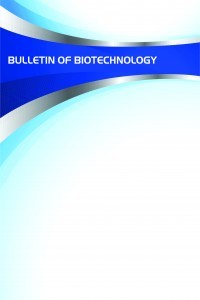Antiplamodial effect of sulfadoxine/pyrimethamine/clindamycin: A study in parasitized mice
Antiplamodial effect of sulfadoxine/pyrimethamine/clindamycin: A study in parasitized mice
Triple regimen, drug combination, antimalaria, mice,
___
- Ashley EA, Dhorda M, Fairhurst RM, Amaratunga C, Lim P, Suon S et al. (2014). Spread of artemisinin resistance in Plasmodium falciparum malaria. N Engl J Med. 371: 411–23.
- Chaponda EB, Mharakurwa S, Michelo C, Bruce J, Chandramoha D, Chico M et al. Sulfadoxine-pyrimethamine parasitological efficacy against Plasmodium falciparum among pregnant women and molecular markers of resistance in Zambia: an observational cohort study. Malar J. 2021;20(1):61.
- Dini S, Zaloumis S, Cao P, Price RN, Fowkes FJI, van der Pluijm RW et al. (2018). Investigating the Efficacy of Triple Artemisinin-Based Combination Therapies for Treating Plasmodium falciparum Malaria Patients Using Mathematical Modeling. Antimicrob Agents Chemother. 24;62(11):e01068-18
- Feachem RGA Chen I, Akbari O, Bertozzi-villa M, Bhatt S, Binka F et al. (2019). Malaria eradication within a generation: ambitious, achievable, and necessary. Lancet. 394: 1056-1112
- Fidock DA, Rosenthal PJ, Croft SL, Brun R, Nwaka S: (2004). Antimalarial drug discovery: efficacy models for compound screening. Nat Rev Drug Discov. 3: 509-520 Gaillard T, Madamet M, Pradines B. (2015) Tetracyclines in malaria. Malaria J. 14(445):1-10.
- Georgewill UO, Nwakaego OE, Adikwu (2021). Antiplasmodial activity of desloratadine-dihydroartemisinin-piperaquine on Plasmodium berghei in infected mice. J App Biol Biotech. 9(2): 169-173.
- Goodman CD, Useglio M, Peirú S, Labadie GR, McFadden GI, Rodríguez E, et al. (2013). Chemobiosynthesis of new antimalarial macrolides. Antimicrob Agents Chemother. 57:907–13.
- Hayton K, Ranford-Cartwright LC , Walliker D. (2002). Sulfadoxine-Pyrimethamine Resistance in the Rodent Malaria Parasite Plasmodium chabaud. Antimicrob Agents and Chem. 46 (8): 2482-2489.
- KnightDJ and PetersW. (1980). The antimalarial action of N-Benzyl oxydihydrotriazines and the studies on its mode of action. Ann of Trop Med Parasitol. 74: 393-404.
- Kremsner PG, Winkler S, Brandts C, Neifer S, Bienzle U, Graninger W: (1994). Clindamycin in combination with chloroquine or quinine is effective therapy for uncomplicated falciparum malaria in children from Gabon. J Infect Dis.169:467-470.
- Lell B and Kremsner PG (2002). Clindamycin as an Antimalarial Drug: Review of Clinical Trials Antimicrobial agents and chemotherapy. 46 (8) 2315–2320.
- Leslie T, Mayan MI, Hassan MA, Safi MH, Klinkenberg E, Whitty CJ (2007). Sulfadoxine-pyrimethamine, Chloroproguanil-Dapsone, or Chlorquine for the treatment of Plasmodium Vivax malaria in Afghanistan and Pakistan: A randomized controlled trial, JAMA. 297(20): 2201.
- Mekonnen LB. (2015). In vivo antimalarial activity of the crude root and fruit extracts of Croton macrostachyus (Euphorbiaceae) against Plasmodium berghei in mice. J Tradit Complement Med. 4;5(3):168-73
- MenardD and Dondorp A. (2017). Antimalarial Drug Resistance: A Threat to Malaria Elimination. Cold Spring Harb. Perspect. Med. (7) 7: 025619.
- Obonyo CO and Juma EA. (2012). Clindamycin plus quinine for treating uncomplicated falciparum malaria: a systematic review and meta-analysis. Malar J. 11: 2.
- Ooji CV. (2009). The fatty liver stage of malaria parasite. Nature reviews micro biology. (2): 94-95. Peter I.T., Anatoli V.K. ASM Press; Washington, DC: 1998. The Current Global Malaria Situation. Malaria Parasite Biology, Pathogenesis, and Protection; pp. 11–22
- PetersW. (1967). Rational methods in the search for antimalarial drugs. Transaction of Royal. Soc Trop Med Hyg. 3; 400-410
- RyleyJF and PetersW. (1970). The antimalarial activity of some quinolone esters. Annals of Tropical Medicine and Parasitology.84: 209-222.
- Smieja M. (1998). Current indications for the use of clindamycin: A critical review. Can J Infect Dis. 9(1):22-8.
- Somsak V, Damkaew A, Onrak P. (2018). Antimalarial activity of kaempferol and its combination with chloroquine in Plasmodium berghei infection in mice. JPathol. 2018; 1-7.
- TargettG, DrakeleyC, Jawara M, VonSeidlein L, Coleman R, Deen J et al. (2001). Artesunate reduces but does not prevent post treatment transmission of Plasmodium falciparum to Anopheles gambiae, J Infect Dis.2001; 183: 1254-1259.
- Udonkang MA, Eluwa BK, Enun, PC, Inyang-EtohIJ. Inyang I. (2018). Studies on antimalarial activity and liver histopathological changes of artocarpus altilis on plasmodium berghei-infected mice. RJLBPCS 4(3): 106-114.
- van der Pluijm RW, Tripura R, Hoglund RM, Phyo AP, Lek D, Islam A et al., (2020). Triple artemisinin-based combination therapies versus artemisinin-based combination therapies for uncomplicated Plasmodium falciparum malaria: a multicentre, open-label, randomised clinical trial Lancet. 395: 1345–60
- Vaughan AM and Kappe SH. (2017). Malaria Parasite Liver Infection and Exoerythrocytic Biology. Cold Spring Harb Perspect Med. 7(6): 025486, 1-21. White, N.J. Anaemia and malaria (2018). Malar J. 17(371): 1-17.
- WoodrowCJ, White NJ. (2017). The clinical impact of artemisinin resistance in Southeast Asia and the potential for future spread. FEMS Microbiol. Rev. 41: 34–48.
- World Health Organization (WHO). The selection and use of essential medicines. Twentieth report of the WHO, expert committee. (including 19th WHO model list of essential medicines for children). WHO technical report seriesGeneva. World Health Organization.2015; 994.
- World Health Organization (WHO). Updated WHO policy recommendation: intermittent preventive treatment of malaria in pregnancy using sulfadoxine-pyrimethamine (IPTp-SP). Geneva, World Health Organization; 2012.
- Wykes MN, Good MF. (2009).What have we learnt from mouse models for the study of malaria? 39(8): 2004-2007.
- Yayın Aralığı: Yılda 2 Sayı
- Başlangıç: 2020
- Yayıncı: Avrasya Araştırma Geliştirme Bilim ve Teknoloji Merkezi Limited Şirketi
Detection of The Effect of CYP2C19*4 Mutation on Clopidogrel Response by In Silico Methods
In Silico Approach For Detection Of The Effect Of UGT1A1 Polymorphisms On Telmisartan Response
Antiplamodial effect of sulfadoxine/pyrimethamine/clindamycin: A study in parasitized mice
Elias ADIKWU, Simeon IGONO AJEKA, Confidence Orgechi NWORGU
Serum levels of irisin, adropin and preptin in obese and athletes
Beytullah ÖZKAYA, Davut Sinan KAPLAN, Caner YILDIRIM, Hakim ÇELİK, Fırat AKCAN, Tugba KILIÇ
